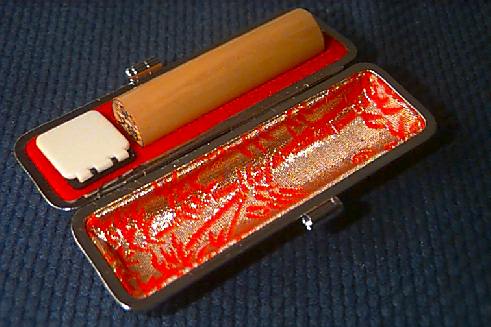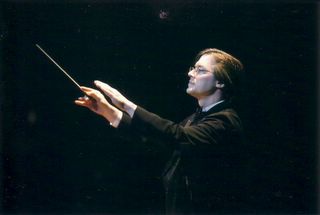Culture, like language
(or disease), is constantly evolving. Unless it is totally bottled up in its own environment, it is a given that it will be influenced by other civilizations which come into contact with it. Even countries with the strongest sense of ethnic and/or national identity will find themselves adapting if not borrowing outright customs from beyond their borders, and this will lead to some native customs being abandoned in favor of foreign ideas which prove more popular. The result is a change in the host culture.
Darwin called this process "natural selection". Whether you believe in evolution, Intelligent Design or the Flying Spaghetti Monster, it is a very real and observable process, and the clash of civilizations is a very good example.
Culturally speaking, Japan has always been a very resilient country. In his novel
"Silence", Japanese author Shusaku Endo describes his native Japan as a "swamp". He says that, no matter what ideas and customs may come in from abroad, they all wind up sinking into the swamp. Rarely is anything imported verbatim. Once a foreign custom or idea is brought in, it winds up becoming something Japanese in the end. Columnists and politicians here in the Land of the Rising Sun are fond of complaining of the Westernization of Japan and the corresponding demise of Japanese culture, but is this really the case? Well, let's look at some fading traditions and draw our own conclusions.
1. Chopsticks
This is a favorite of the local media. It seems that many if not most Japanese children nowadays can't use chopsticks properly. They hold them in all kinds of bizarre ways, often with messy results. Given a choice, most will choose Western-style forks and spoons. Now more and more convenience stores are giving out plastic forks with salads instead of the traditional
waribashi (disposable chopsticks) unless specifically asked. Even maps and car navigation systems indicate a restaurant
(even a traditional Japanese one) with a symbol of a knife and fork.
However - I actually ran into some trouble when I first came to Japan because the Japanese have their own system of manners regarding use of Western eating utensils. Once when I ate at an American-style restaurant in Kashima I followed the usual pattern of starting with the outermost utensils and working my way in. Apparently that was wrong, because, with a huff, the waitress replaced the knife I'd used with my first course, took away the next one in line on my table, banged it into the dirty dish tray, and said, "
Baka ja nai?"
("What an idiot!") I've also noticed that it's the custom here to eat plain rice on the
underside of the fork. Actually, though, I don't think chopsticks will disappear completely. They're still what you get if you eat at any traditional Japanese restaurant.
2. Kimono
Back in my high school days I remember watching a Japanese exchange student perform a traditional dance in a lovely kimono. After she was done, she grabbed the microphone and said, "You probably think I dress like this all the time. Wrong. I don't. This dress is really uncomfortable, and I don't like to wear it." Back then I couldn't help but be a bit surprised by her
caustic attitude revelation.
(Now, thinking about it in retrospect, I'm only surprised by her English ability!) I of course had always harbored an image of Japanese girls as being polite, graceful, and at least sometimes clad in kimonos. Boy, was I mistaken! Yes, kimonos are rather uncomfortable.
(No, I've never tried wearing one myself, but I know how tight they pull those obi sashes...and I also know how well kimono don't fit the Westernizing Japanese female figure!) They are also very expensive. At the same time, Japanese women tend to be obsessed with European name-brand clothing anyway, so kimonos just don't enter the picture.
However - while modern Japanese women may not like to wear kimono often, they still take great pride in them. You can often see them parading around in them at festivals or important events like weddings. Also, young women go to a lot of expense and trouble to dress up in special kimono for their "Coming of Age" ceremony. Little girls are also dressed up in kimono for their
Shichigosan (7-5-3) celebrations. While we're talking about female dress, I suppose it would also be appropriate to add that clothing fashions here do
NOT exactly match those of the countries whose brand names they adore. In fact, when my wife and I visited Burberrys, Liberty, and Laura Ashley shops in London during our honeymoon she was shocked at how "boring" the selections were there compared with those of the same shops back in Japan!
3. "Squatty Potties"
Western-style toilets weren't always easy to find back in the 90s. Many if not most houses as well as the overwhelming majority of public restrooms had the traditional Asian "squatties". Even at
Ye Olde Academy there were only three restrooms in the entire, sprawling campus that had sit-down types, and they were all intended for either guests or the principal. Actually, "squatties" aren't as bad as you probably think; many people, including a lot of ex-pats here, believe them to be a more effective way of emptying one's bowels. I also appreciated the fact that you didn't have to worry about pressing your naked cheeks against a freezing-cold seat in winter. However, it's impossible to relax when using them. Medical experts have even gone so far as to claim they present a possibly damaging strain on the legs. At any rate, public opinion seems to be turning against them, and they are rapidly disappearing. Now it seems like most restrooms either offer a choice
(like most of them now do at Ye Olde Academy) or have only Western sit-down types.
However - As Western-style toilets have become prevalent, so have the heated toilet seat and the bidet. Now it is even harder to find a simple, unpowered toilet than it is to find a "squatty". Moreover, toilets of any sort in Japan have always been equipped with 2-speed flushing, i.e. "little"
(for "number ones") and "big"
(for "number twos"). Most Japanese would probably find a single-speed flush toilet hard to understand.
4. Keigoお客様、こちらへ御覧に成ります。これから御説明致します。The term "
keigo" (敬語) directly translates as "honorific speech". In addition to separate plain and polite forms of the verb, the Japanese language includes a number of unique words, expressions, and even grammar patterns that are used to indicate either respect for someone else or polite self-degradation. Honorific speech can be quite complex. Indeed, it was one of the most difficult parts of my Japanese language study before I came to Japan...
...and discovered that few people actually use it. In fact, most adults here seem not to know it very well at all, and they often use it as a trivia game topic to quiz each other during parties. The overwhelming majority of teens have no concept of it whatsoever. It used to be simple, everyday, common sense etiquette, but now it is virtually a dead language.
However - even though the Japanese people tend not to use
keigo very much anymore, their machines certainly do! Withdraw cash from any modern ATM machine, and a soft female voice will probably bathe your ears with some classic polite speech
(usually while a doe-eyed cartoon woman bows demurely on the monitor screen). The same is true of a lot of vending machines.
Keigo is also what tends to spew from those obnoxious speaker vans and planes that blast political campaign messages during election season. In other words,
keigo has become something that is heard but not spoken, but that will help ensure its existence for some time.
5. KanjiThe Chinese written system, known locally as
kanji (漢字), was brought into Japan as early as 47 AD(/CE) but didn't come into widespread use until around the 5th century. It has been a problem ever since. True, there are many advantages to using kanji; the fact that it is mainly read for its direct meaning rather than its phonetic pronunciation actually speeds up the reading process
(though it makes writing more tedious) and makes misunderstanding less likely. However, the Chinese written system was obviously designed for use with the Chinese language, which is totally different from Japanese. Since compatibility was all but impossible, Japanese priests, scholars, scribes, and nobles adopted the habit of simply writing everything in Chinese but reading them in Japanese. That was more than a little inconvenient, obviously,
(Imagine going through life with everything written in Greek but read in English!) , but the practice was maintained for around 500 years. To make things a bit easier, a system of markings was developed to add to the Chinese writing to at least help the reader understand the differing word order. That was still a pain in the butt, of course, so finally female aristocrats in the 10th century got fed up with it all and designed a pure phonetic alphabet which could be used to write Japanese directly. That script is now known as hiragana. It quickly caught on with everyone except the male nobles and Buddhist scholars, who stubbornly went on writing in Chinese
(rather like IBM stubbornly sticking with "sophisticated" text-based operating systems even when Apple had proven people like GUI things better) and then invented their own, parallel phonetic script, which is now known as katakana. Eventually the three written systems settled into a sort of uneasy symbiosis, with kanji providing the meaningful components of most words, hiragana indicating the grammar constructions, and katakana spelling out all the foreign stuff.
Perhaps the biggest danger lie in the fact that hiragana was also used for children's writing. In other words, kids learned it first followed by katakana and kanji later. That meant that not only did people retain hiragana easier, but they tended to fall back on it whenever they couldn't remember how to write a particular kanji. Over time, it became more and more common for more difficult kanji to disappear from writing altogether, replaced instead with hiragana as the standard. Even now I'm occasionally told that kanji I learned in college are no longer considered part of everyday written discourse, and my using them makes me sound rather stuffy or bookish. Even worse is the fact that it seems to be an increasing fashion trend for young people , girls in particular, to write ONLY in hiragana...i.e. teens and twains writing like grade school students. They say they do it because it "looks cute", but it has also become a custom in SMS messaging an cell phone e-mails. Kanji has suddenly found itself being dragged closer and closer toward life as a museum exhibit.
However - the Japanese in general still seem to have a lot of pride in kanji, and they consider its knowledge a mark of good character. Even teens who rarely write anything but hiragana outside the classroom occasionally quiz each other on their kanji knowledge. Finding difficult kanji on a sign also arouses intense curiosity more often than not. Also, as I mentioned in a recent post, the Japanese still take great pride in the kanji they use in their names. Yes, kanji may likely fade from general use, but it will never disappear completely.
(To be continued...)











